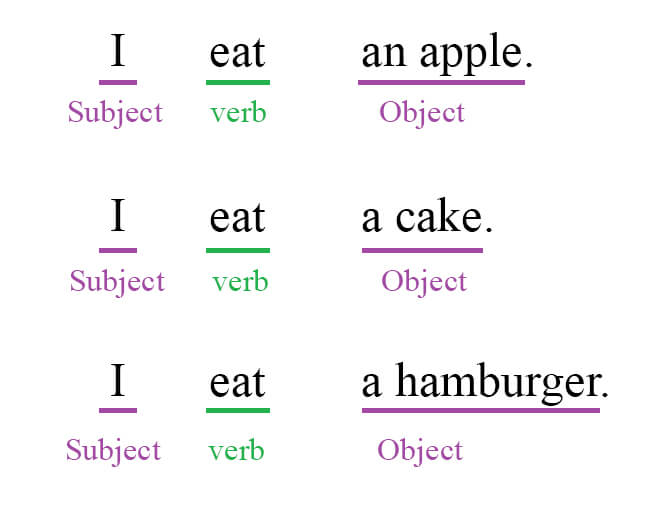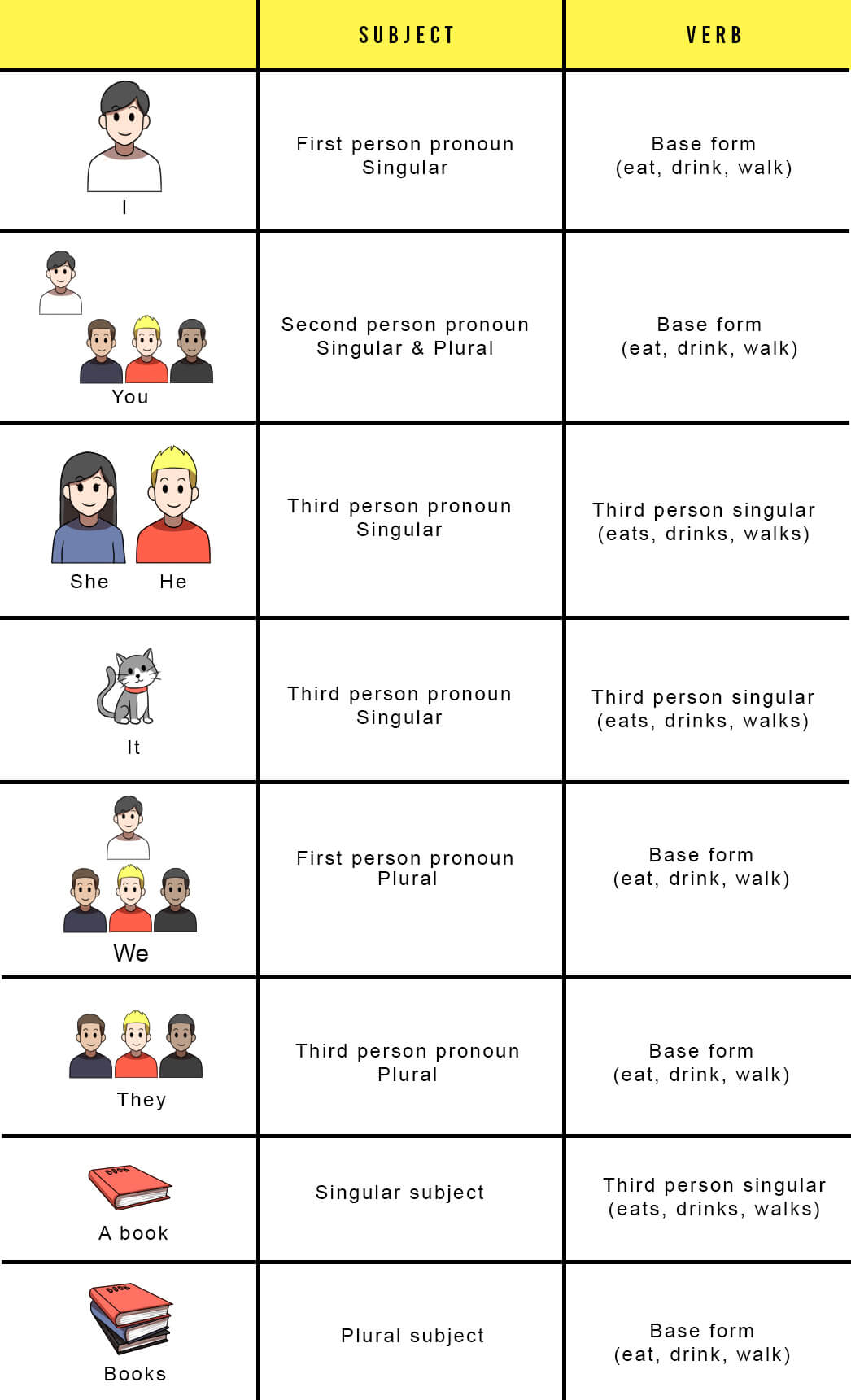Simple Present and Subject-Verb Agreement
- Simple present tense follows the structure: Subject - Verb - Object.
- Subject-verb agreement is important. If the subject is he, she, or it, we add an "-s" or "-es" at the end of the verb. If the subject is I, you, we, or they, we do not add anything to the verb.
- Use simple present tense to talk about fixed habits or routines, express facts, or describe regular actions.
The simple present tense is a basic verb tense in English. This tense is used to talk about a habit, routine, fact or general truth. It's built using the base form of a verb. The base form of a verb is the verb that hasn't been modified. The basic structure to follow when using the simple present tense is Subject - Verb - Object.
Simple Present Tense - Structure
The simple present tense in English follows this structure: Subject (I, You, He, She, It, We, They) - Verb - Object.

Examples:
-
I eat apples.
Subject ("I") - verb ("eat") - object ("apples").
-
She reads a book.
Subject ("She") - verb ("reads") - object ("a book").
Subject-Verb Agreement
In simple present tense, we have to pay attention to subject-verb agreement. This means the verb has to match with the subject.
If the subject is "I", "you", "we", "they", or many things or people, we use the base form of the verb. E.g. "You eat bread."
If the subject is "he", "she", "it", or one thing or person, we add an "-s" or "-es" at the end of the verb. This kind of verb is called "third person singular".

Examples:
-
I eat apples.
Subject is "I". Verb is "eat" (base form).
-
You eat apples.
Subject is "You". Verb is "eat" (base form).
-
He eats apples.
Subject is "He". Verb is "eats" (third person singular).
-
She eats apples.
Subject is "She". Verb is "eats" (third person singular).
-
It eats apples.
Subject is "It". Verb is "eats" (third person singular).
-
We eat apples.
Subject is "We". Verb is "eat" (base form).
-
They eat apples.
Subject is "They". Verb is "eat" (base form).
-
My child eats apples.
Subject is "My child" (1 person). Verb is "eats" (third person singular).
-
My children eat apples.
Subject is "My children" (many people). Verb is "eat" (base form).
When do we use the simple present tense?
We use the simple present tense to talk about habits, routines, facts, general truths, or actions that happen regularly.
Examples:
-
I take a shower every morning.
This is a routine or habit.
-
Water boils at 100 degrees Celsius.
This is a fact or general truth.
-
My dog barks at the mailman every day.
This is an action that happen regularly.
Pratiquez ce sujet avec le AI English Tutor
AI English Tutor vous apprendra la grammaire et la pratiquera avec vous sous forme de conversation. De plus, plus de 100 questions pratiques sur ce sujet pour consolider votre compréhension.
Essayez ALULA gratuitement sur votre téléphone ou votre tablette








Avez-vous des questions sur cette leçon ? Posez-les dans la section des commentaires, ci-dessous.